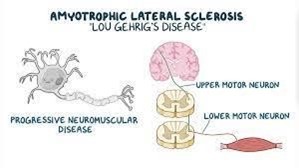A nurse is providing teaching about lithium to a client who has bipolar disorder. Which of the following information should the nurse include?
"Restrict your fluid intake while taking lithium.
"Double your dose of lithium if you experience blurred vision."
"Consume a moderate-sodium diet while taking lithium."
"Slurred speech can indicate that your lithium level is low."
The Correct Answer is C
Choice A rationale:
Restricting fluid intake is not the primary concern when taking lithium. It's more important to maintain a consistent level of sodium intake.
Choice B rationale:
Doubling the dose of lithium without medical supervision can lead to lithium toxicity, which can be life-threatening.
Choice C rationale:
Sodium levels can impact the effectiveness and safety of lithium. Consuming a moderate- sodium diet helps prevent sodium depletion or overload, which can affect lithium levels.
Choice D rationale:
Slurred speech is not indicative of low lithium levels. It's important to monitor for signs of lithium toxicity, which include tremors, confusion, and GI symptoms.
Nursing Test Bank
Naxlex Comprehensive Predictor Exams
Related Questions
Correct Answer is C
Explanation
Choice A rationale:
Wearing splints over affected joints while sleeping is a strategy to prevent contractures, which are common in ALS.
Choice B rationale:
Dexamethasone is not used to treat muscle atrophy in ALS.
Choice C rationale:
As ALS progresses, clients may lose the ability to control their respiratory muscles, and a machine such as a ventilator may be required to assist with breathing.
Choice D rationale:
Nutrition through a central venous access device is not a standard intervention for ALS, as the focus is on preserving the client's ability to eat and swallow for as long as possible.

Correct Answer is B
Explanation
Choice A rationale:
Requesting an opportunity to discuss trauma might be indicative of the client's desire to process their experiences, but it's not a specific symptom of PTSD.
Choice B rationale:
Recurrent nightmares are a common symptom of PTSD, often related to the traumatic event.
Choice C rationale:
Indicating working extra hours is not a specific symptom of PTSD.
Choice D rationale:
Exhibiting diminished reflexes is not a typical symptom of PTSD.
Whether you are a student looking to ace your exams or a practicing nurse seeking to enhance your expertise , our nursing education contents will empower you with the confidence and competence to make a difference in the lives of patients and become a respected leader in the healthcare field.
Visit Naxlex, invest in your future and unlock endless possibilities with our unparalleled nursing education contents today
Report Wrong Answer on the Current Question
Do you disagree with the answer? If yes, what is your expected answer? Explain.
Kindly be descriptive with the issue you are facing.
